We discover the first forms of the tie in the tomb of the first Chinese emperor, Qin Shih-huang-di living in 259-221 p.n.e. It was the imperial army of seven and a half thousand terracotta soldiers who wore scarves, which with their binding resembled a simple knot. The habit of covering the throat was lost over time and two thousand years had to pass to be reborn. In the Middle Kingdom, it was only in the 17th century that, thanks to the influences from European fashion, the throat was tied once again and it has not been forgotten to this day..

We find further traces of the use of headscarves in the images of the Roman army of two and a half thousand, Trajan's column immortalized in marble from 113 year AD. The necks of these soldiers were decorated with scarves tied in the form of a ribbon or a simple knot. There are also such explanations on the Roman sculpture: “The ancients protected the throats from the cold, wrapping them with woolen or silk pieces of cloth, which bore the Latin name focalium, derived from the word fauces - throat”. As we also learn from Horace, the great Roman poet of that time, covering the throat was a sign of effeminacy, that is, loss of male character traits and poor health. It has just become something unworthy, that is why in Roman art only soldiers wore shawls, who were exposed to unfavorable weather many times.
The 16th century brought many changes. The tradition of not covering the neck, which survived almost all antiquity, this time she was overthrown. Tailors and designers decided that it is worth taking care of the part of the body which is the neck. As a result of these actions in England during the reign Henry VIII simple collar tied with a ribbon, it evolved towards a little jabot at first, and then to the ruff, that is, a pleated collar. Unfortunately, its development was stopped as a result of the beheading of the royal promoter of this costume element – Charles I., as a result of the civil war lost by rationalists in 1649 year. Only eleven years later, with the restoration of the monarchy, will the ties around the neck reappear.
The history of the original ties
Despite the scarves used before our era, the first versions of the modern tie were not initiated until the Thirty Years' War (1618-1648). During the fight against the Habsburgs, King Louis XIII of France supported himself with Croatian cavalry regiments, whose mercenaries wore scarves around their necks. French opponents of arms also adopted this practice. The ties of the time were decorative and practical at the same time; differed from the rhesus (pleated collar) this, that they did not need to be washed, iron or starch, and also gave greater freedom of movement.
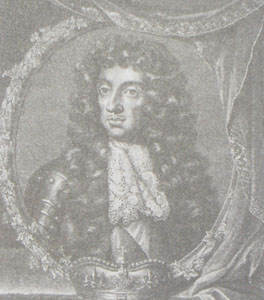
In France, among the dandies right after the war (elegant men) and the courtiers adopted a new fashion. In England, however, the tie appeared with the restoration of the monarchy and the assumption of the throne by Charles II, returning from a nine-year exile at the French court at Louis XIV. The next decade was favorable for the spread of the tie, who appeared in England, and even in colonies across the Atlantic.
Looking at the Oxford dictionary one can infer, that the etymology of the word "tie” (cravat) comes from the Croats (Croat), although the story is actually a bit different. In France, the word "tie" was already used in the 14th century”, and in Italy in the sixteenth century. Eustache Deschamps (ok. 1340-1407), medieval french writer, he used the expression in one of his ballads restrain his tie (pull his tie tighter). As for the word's origin, we cannot be sure, but we can say with certainty, that the tie comes from brave Croatian mercenaries fighting against the Habsburgs in the Thirty Years' War.
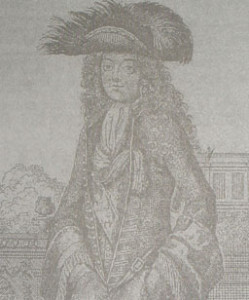
The original ties are stripes of lace, muslin or batiste decorated at the ends with a ribbon. They were wrapped around the neck once or twice and tied at the front, so that the two ends hang freely. Randle Holme in his book Academy of Coat of Arms and Armor (Academy of Armoury and Blazon) with 1688 that's how he described the ties: “They're just long towels, which is wrapped around the collar and tied in a bow at the front”. The description presented by Randle was one way of tying a tie, but it was also tied in a movable knot (also known as a bench) or the two ends were joined with a ribbon. Whereas François Chaille v Tie Book (The Book of Ties) he wrote: "Easy to say, but tying a tie properly requires a great deal of skill and practice”. The good effect was not due to the complex knot, but a mobile node (half steak), which was as simple as today's simple knot.
The tie's position as an element of elegant attire among Europeans and Americans at the end of the 17th century was already unquestionable. According to Chaille, this may have been due in part to the cooling of the climate at the turn of the 17th and 18th centuries, especially as it was believed, the so-called. the Little Ice Age was the result of a decline in solar activity over the years 1645-1715. Such an explanation of the popularity of the tie seems quite convincing, especially if you recall the arguments of the ancient Romans.
During the last decade of the 17th century, a new fashion for tying a tie was born in England – stone church. Its name derives from the game played in 1692 The year of the battle between the English and French at the village of Steenkerk in Flanders. During this battle, the French found themselves in serious trouble and did not even have time to properly tie their ties. The steinkerk knot was tied loosely over long shawl ties, the ends of which were decorated with lace or fringes. Steinkerk fashion spread rapidly and persisted in Europe until the 1820s, in America, on the other hand, until the end of the eighteenth century.
Fulara history
The foulard was introduced by infantry in France and Germany in the early 18th century. At first, it spread among young soldiers. By wearing a foulard, the soldiers proved their affiliation to the army. By wearing it, they could show their true or false devotion and faithfulness. Foulard gained great popularity and remained in fashion until the end of the 18th century.
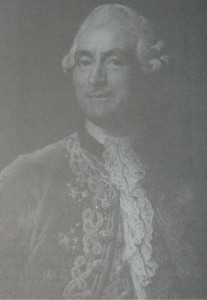
Originally it was a piece of white muslin folded into a narrow strip, tied once or twice around the neck and fastened at the back with a pin. The increase in popularity contributed to the decoration of the foulard with other elements, such as underwires and leather or cardboard stiffeners high up to the neck covered with white or black fabric. Fulars were often worn together with jabots in the form of pieces of white lace attached directly to it. Thanks to the black ribbon – solitaire, which was tied at the back, it was possible to obtain a beautiful bow tie against the background of a white foulard.
Putting on the foulard was very easy. There was no need to tie it at the front, but it tightened at the nape of the neck, which meant that keeping it in good condition did not cause any problems. Unfortunately, the foulard has suffered as a result of attempts to diversify it. Author The art of tying a tie this is how he presents the situation:“The biggest heads were involved, to make the cravat as varied as possible. With each step it became more and more sophisticated torture device – until by placing a slat in the center, the "ornament" became as hard as an iron hoop”.
One of the supporters of black velvet foulard with a satin bow tie – Prince George IV, when in 1820 he ascended the throne, made people interested in this neck ornament again. This time the white cravat has become a rarity, and George IV's black cravat became the commonly worn color. The black cravat was nothing like its white predecessors, reaching high up to the chin. Though it was still wrapped twice around the neck, but now it was additionally tied at the front and with a bow. Foulard remained in fashion until the mid-nineteenth century.
A history of exaggerated ties
The 1860s brought a fashion for extravagance and exaggeration among young people in England. It was the influence of the prevailing Italian style mignon. Macaroni, because that's what this group of people was called, she liked the big ones, powdered wigs, rich embroidery, precious jewelry and white ties, tied in huge bows-bow ties.
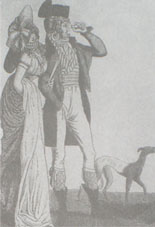
The Macaroni style did not become popular in America, but in the 1770s, everything was in fashion in France, what english. It was not even prevented by the war between these countries that has been going on for twenty years. In France, the Incroyables became the Macaroni equivalents, which meant "amazing”. Their exaggeration was expressed through the emphasis on the shoulders, wide lapels and big ties, huge sizes wrapped up to ten times around the neck. Tie sizes have become unbelievable, which prevented wearing them, because each turn of the head to the side required additional and complicated movements with the whole body. The bow tie was just an extra detail.
The tie developed further in the 1780s, following the Macaroni fashion, among other things. There were, among others, large square scarves made of muslin or linen, which were folded diagonally until a narrow strip was obtained. They were tied in a regular knot or in a bow tie, in much more reasonable proportions than the Macaroni did. The lace used in modern ties has ended, and the effect of previously used expensive materials, it was replaced by arranging the neck ornament according to the aesthetics.
The history of modest ties
The beginning of the 19th century brought the beginning of a new fashion, quite different from the previous one. Dandyism, completely different from the macaroni or incroyables style. The Dandies sought perfection through simplicity, and the reputation of a true gentleman was evidenced not only by what he is wearing, but mostly how he is dressed. The greatest supporter and precursor of dandyism was George Bryan Brummel (1778-1840), who reached the top of English society thanks to great determination, intelligence and impeccable dress. He was also a friend of the Prince of Wales and later King George IV, who remained in its shadow.
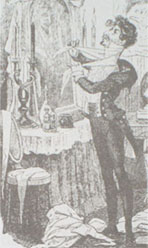
Brummel realized, that the times of the aristocracy are passing, and the days of good taste and manners are coming. Though he spent many hours on the toilet, but his goal was to look modest and simple. The Earl of Chesterfield had similar views, which he wrote in his letter to his son: “Always try to dress like this, like all other normal young people. Also consider, so that no one talks about your outfit, that he is too careless or too studied”.
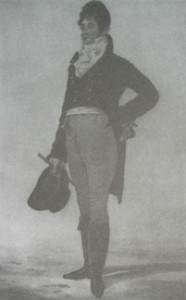
Brummel's outfit consisted of a tight-fitting blue tailcoat, a buff vest and matching pantaloons, tucked into polished black boots. Plus a spotless white tie, slightly starched, so that it maintains its proper shape longer. According to the trends of the time, this is exactly what the garment should be – modest, straight, fitted to the figure, but not too tight. “The best-dressed man is this, who gets the least attention” – Douglas Fairbanks, Jun. wrote a hundred years later.
This simplicity became a trend in men's clothing while the ruined Brummel was in exile in France.. Gentleman was supposed to look modest, and a tie, usually plain and white, he was a reflection of personality. The knot played an important role. The neck ornament was to be the most important element of clothing forever.
The history of the tie literature
Along with the development of dandyism and as a result of it, the tie has reached the apogee of its popularity. It became a showcase of a man and emphasized his personality. New ones have appeared, more complicated ways of tying it, books were to be helpful in tying up, to help a man face the new demands of fashion.
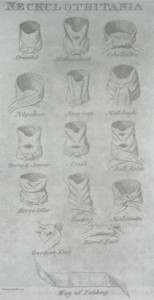
tieology (Necklothitania) anonymous by z 1818 of the year lists twelve popular nodes. The author tried to show the differences between the right man (a gentleman of flesh and blood) i scoundrel (call). He also introduces the essential knowledge of the art of tying a tie in this book.
The books L art de se mettre la cravate, published in Paris in the 1827 pod pseudonym Baron Emile de l Empesé (which literally means "Baron de Krochmal” or The Art of Tying a Tie by H. The Blanca. However, both of the above-mentioned items have not achieved as much popularity as the next work.
Hart to tie the tie was published by the printing house of Honorius de Balzac, however, Balzac probably only wrote an introduction, and the author was Emile-Marc de Saint-Hilaire. This work, reissued several times, has achieved great success, becoming a bestseller not only in Europe. The book presented 32 bonding methods and contained the most information of all of the above.
The peak of tie-lovers came in a year 1830, when the book U Art de la Toilette appeared 72 ways to tie a tie. Most of the knots were different versions of a regular knot or a bow, often with virtually no difference. The details were important, which distinguished between methods of binding.
The story of the bow tie
Early Victorian fashion required jackets to be fastened at the neck, which limited the possibility of wearing a large tie. Plus, many men couldn't spend too much time tying their neckties. They needed something that could be done quickly, easy to tie and would not restrict movement. As a result of such requirements, new mutations of the ornaments of the male neck appeared and at the end of the 19th century three basic versions were distinguished: musk, ascot i four-in-hand, precursor of modern ties.
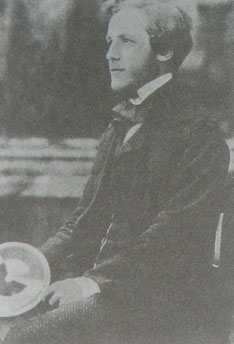
The first forms of bow ties were used to tie the original 17th century ties, and they maintained their popularity throughout the ensuing years 300 years. The growing popularity of flies contributed to the reduction of their size and the formation of two types of the bow tie at the end of the 19th century: "Butterfly” (with pointed ends) and "bat” (with straight edges). Both varieties have survived to this day, but "butterfly” gained more popularity. Currently, black silk bow ties are sometimes worn with a tuxedo (necessarily black!), and stiff white ties for the tailcoat.
The ascetic genealogy is identical to the Gordian tie of the early 19th century. The difference is this, that the ascot has narrower lobes and a wider central part, directly adjacent to the collar. They are tied with a flat or Gordian knot, from which the above-mentioned tie takes its name. Their free ends are put on top of each other and pinned together. The popularity of ascotic in the 1880s meant that it was worn by the upper middle class during the Royal Ascot horse racing. Nowadays, it is worn during races and at weddings.
The history of the modern tie
Four-in-hand is the name for both a tie and a knot. To begin with, we will try to look at the former. The four-in-hand tie is the prototype of the modern long tie. In today's English, the name from four-in-hand tie has been shortened to tie (tie), and everything we call four-in-hand today is about the knot (simple).
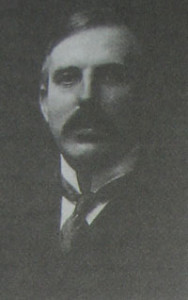
The four-in-hand tie gained popularity in the 1850s, which spread over the next decade and the tie became widely known. It was part of the sports outfit of young Englishmen. Its features remained unchanged, but also today's four-in-hand is unlike its ancestor over a hundred years ago. This rectangular piece of fabric was cut along the fibers which made it inflexible and as a result the knot was usually loose. The name for both the knot and the tie probably comes from the London Four-in-Hand Club for gentlemen..
The four-in-hand tie, by its spread in the 19th century, put an end to the rigid era, straight collars. There are new classic collars to match the tie more than a bow tie or ascot. W 1926 New Yorker Jesse Langsdorf introduced a diagonal cut of the material which allowed to give the tie more flexibility. The tie was sewn from a single piece of fabric, but Langsdorf suggested that it be sewn from three pieces. This allowed for easier bonding and greater resilience. This is how the modern necktie was born.
The shape of the tie was constantly evolving. It was extended due to the decline in the popularity of the harness, which caused a gap between the jacket halves. The width of the tie varied from two to five inches over the course of a century (5-13 cm). Three and three and a half inches is considered the most appropriate width (ok. 8-8,5 cm) and many brand name manufacturers only produce neckties in this dimension.
The four-in-hand knot became used with the beginnings of the tie and until the 1930s the knot was the only one widely used worldwide.